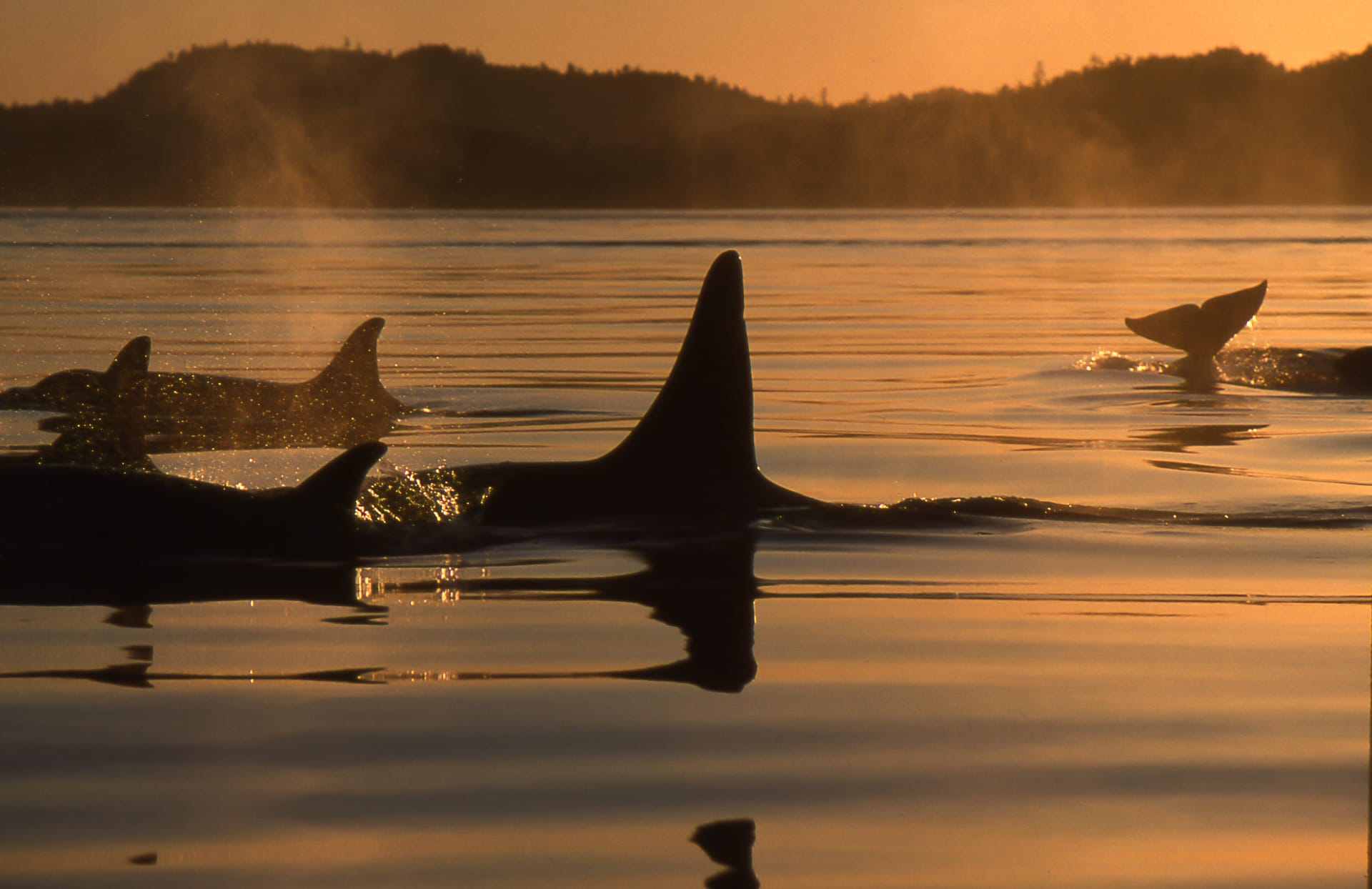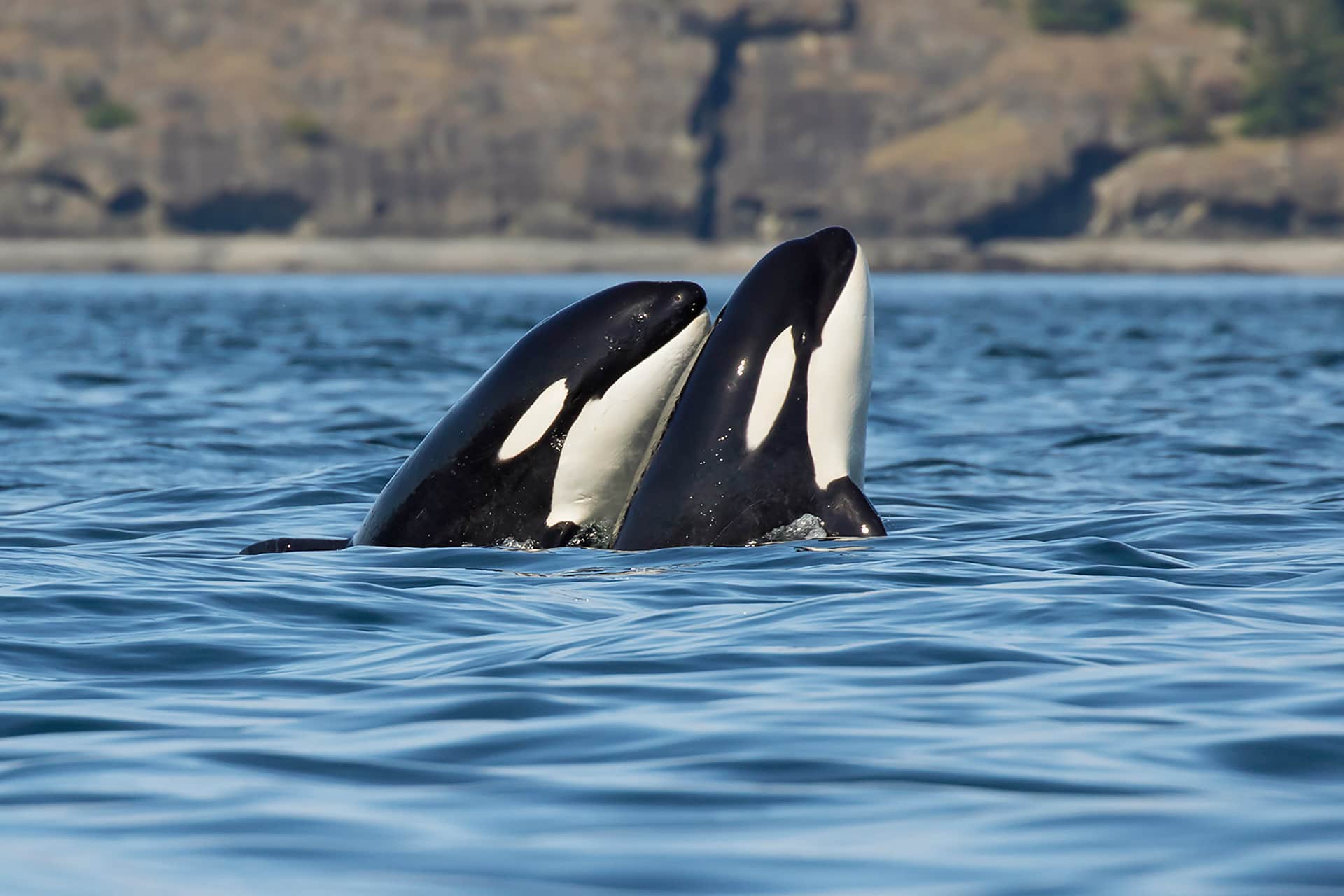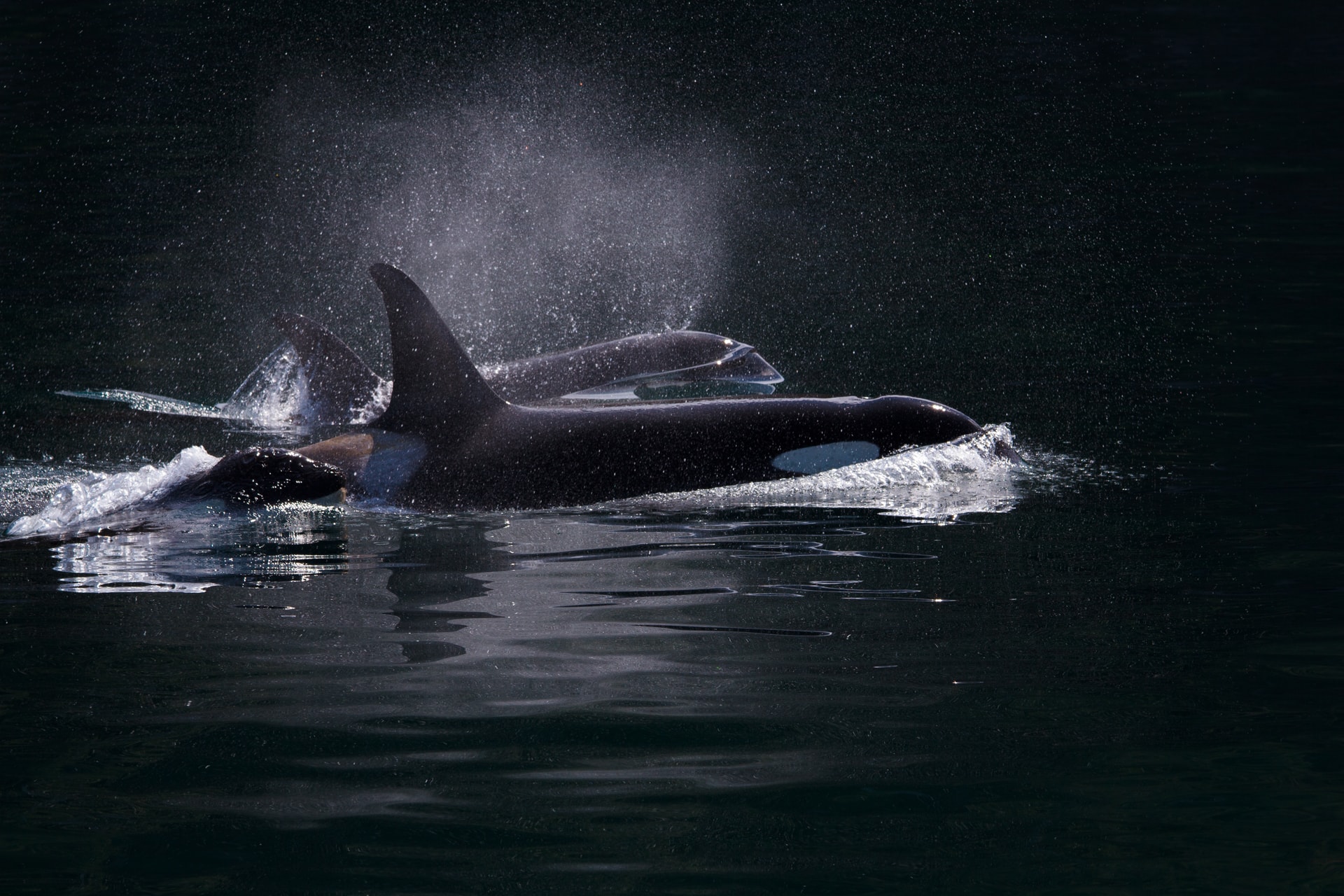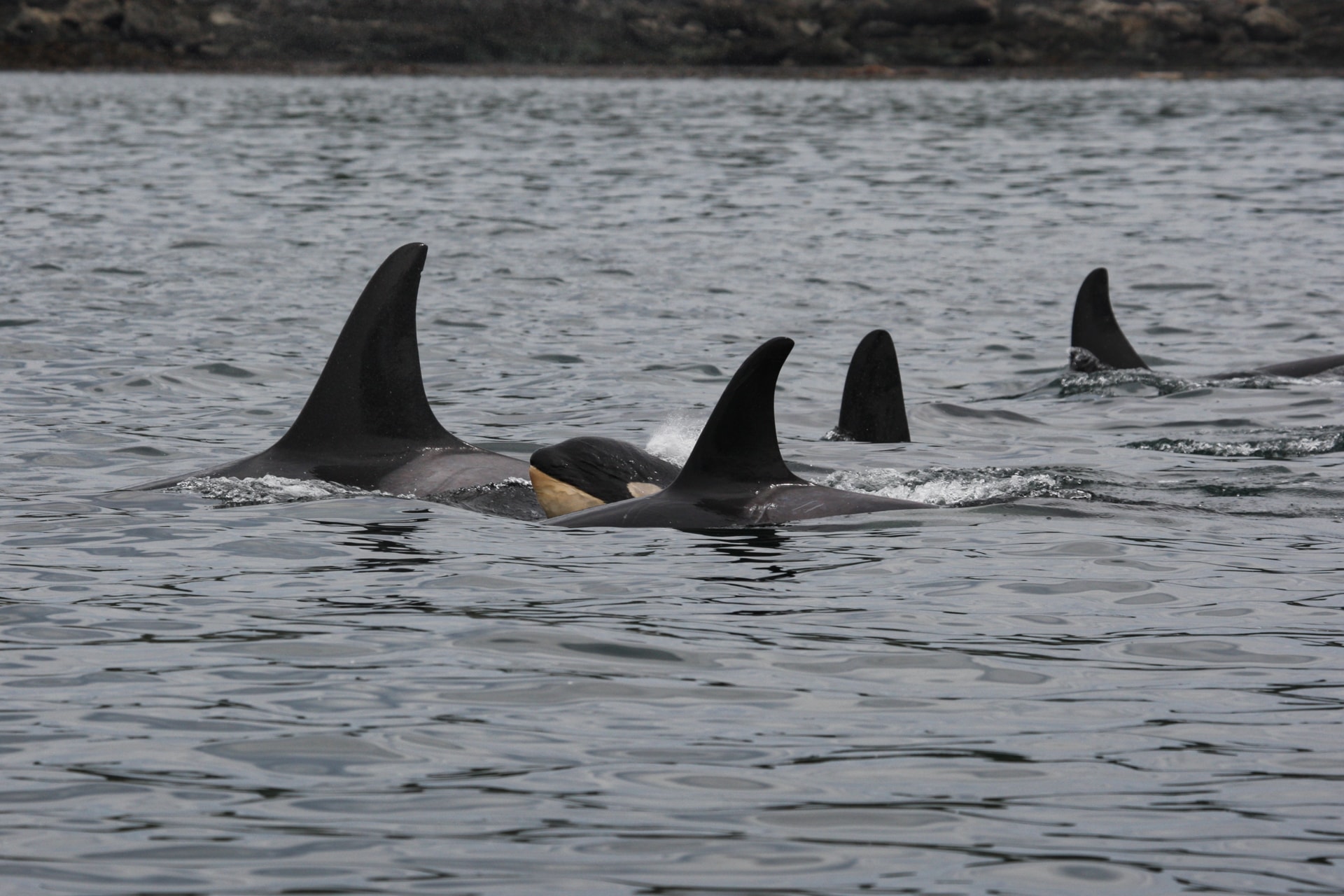
Killer whales are exposed to chemicals like PCBs even before birth, and every subsequent meal over their lifetime further exposes them to these toxicants. In fact, a 2018 study predicted “global killer whale population collapse from PCB pollution,” noting that the impacts to reproduction and immune function “threaten the long-term viability of the world’s killer whale populations.”
Although the Southern Resident killer whales only eat fish, they are known to have some of the highest levels of PCBs recorded, and a 2016 paper co-authored by Wild Orca’s Dr. Giles, showed that seasonal lack of Chinook salmon elevated the Southern Residents’ PCB levels, thus increasing their exposure to these harmful pollutants.
When hazardous substances enter the marine environment, they are assimilated into the first link in the food chain, phytoplankton. The phytoplankton is consumed by zooplankton, which in turn is consumed by smaller fish, etc. and the chemicals accumulate in each link of the food chain.
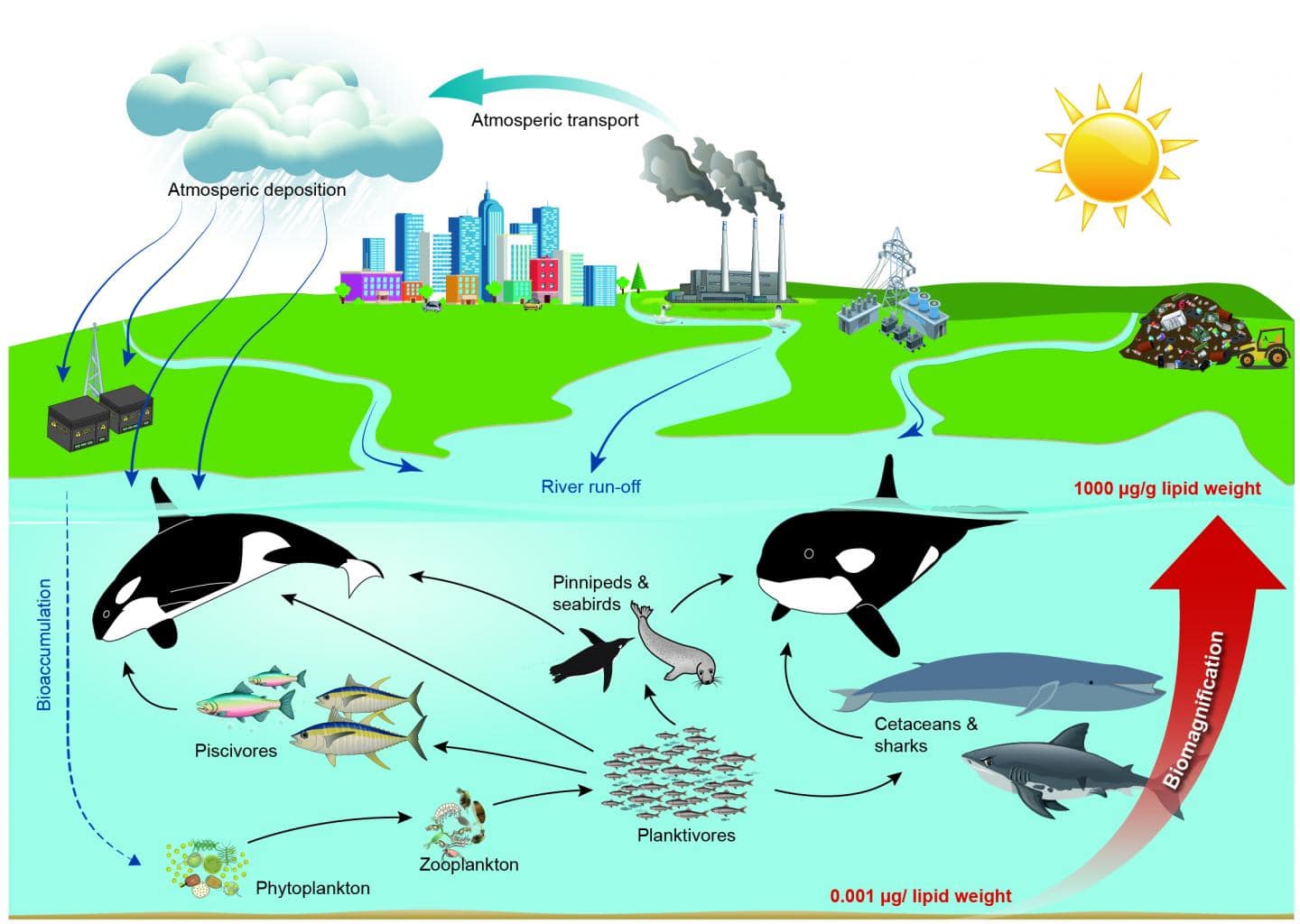
Researchers measured PCBs in Southern Resident fecal samples collected over 4 years. Using published estimates of Chinook returning to the Fraser River each year—during the sample collection months of May to October—they found that PCB levels were “highest and had the greatest potential for toxicity when prey abundance was the lowest.” Conversely, PCB levels “decreased as prey abundance increased.”
Researchers proposed that, “an increase in PCBs when prey abundance is low indicates the source of the exposure is likely from internal lipid stores that are metabolized for energy.” That is to say that, PCBs ingested with each meal, and stored in their blubber—are released when they need to use their fat reserves in times of prey shortage.
Consequently, researchers noted that “the implications of increased toxicant exposures during nutritional shortage emphasize the importance of salmon recovery in killer whale conservation efforts.” In other words, increasing Chinook salmon is a solution to this pollution.
Hormone levels from these fecal samples were used to evaluate nutritional stress, and to detect pregnancies. This allowed researchers to track changes in pollutant levels, as females are known to transfer PCBs through their milk when nursing.
Orca milk has a high fat content, due to fat released from their blubber; sadly PCBs stored in this fatty tissue are also released. It’s estimated that every “2—4 kg of milk converts to 1 kg of calf mass gain, consequently transferring high-levels of toxicants to nursing young.”
The greatest impact is to the first born calf, as a pregnant female ”offloads” PCBs accumulated since her birth, first in the womb and then when nursing. During the study period, J35 Tahlequah raised her first calf, J47 Notch. Over the first 440 days of nursing, her PCB levels had decreased by 83%. By comparison, K12 Sequim nursing her fifth calf, K43 Saturna showed a much smaller reduction, at 8%.
Yet both may have deadly consequences, and in fact J35’s subsequent calf died shortly after birth. Increased PCB levels due to prey shortages likely play a part in the high mortality of newborns—and in miscarriages, shown to be as high as 69%.
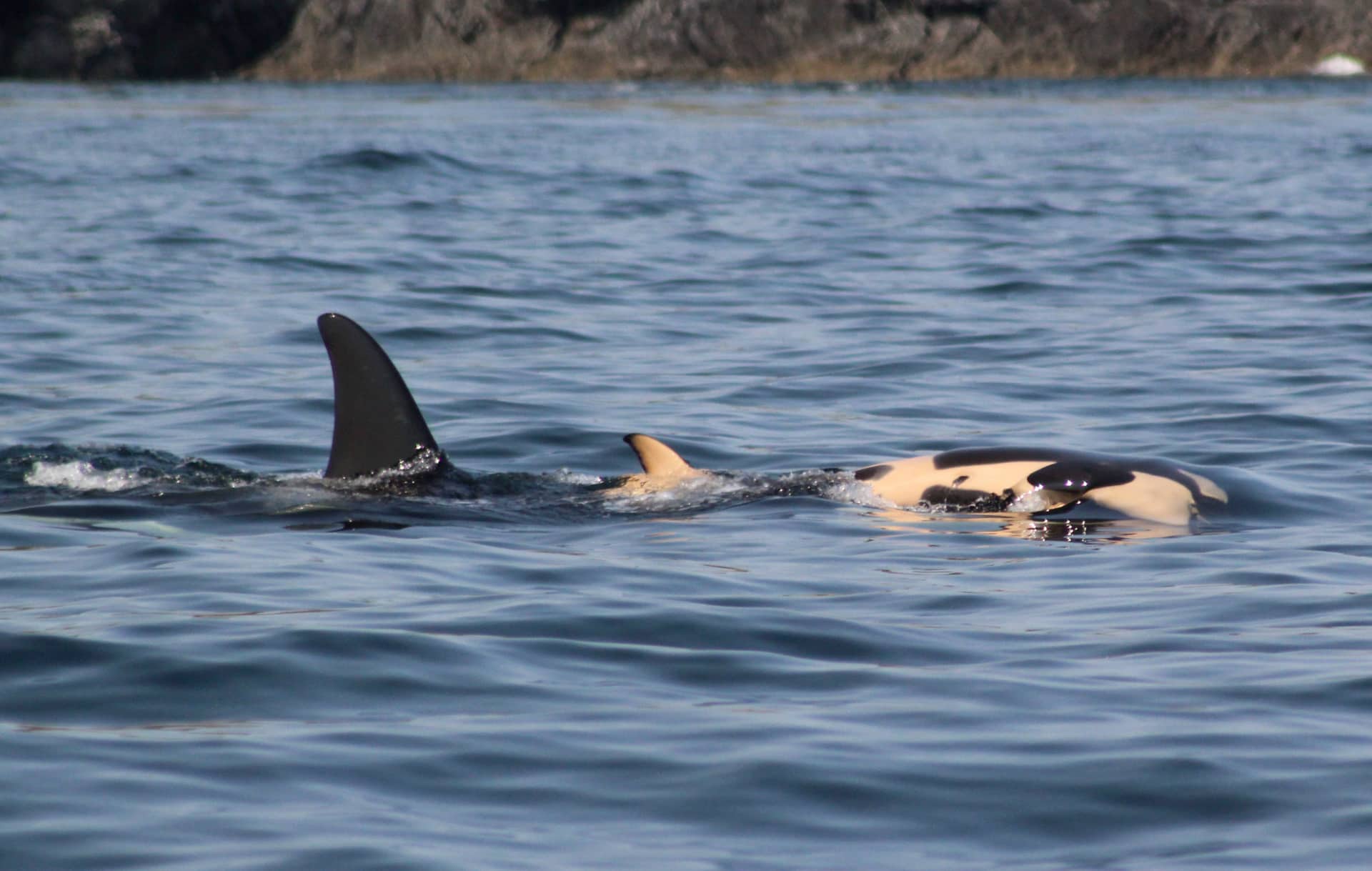
J35, Tahlequah, pushed her dead calf for 17 days.
Yet the transient killer whale population sharing the Salish Sea foraging grounds has been growing for “at least four decades” despite “concentrations of pollutants that far exceed” their salmon-dependent counterparts. According to researchers, “the consistent prey base of pinnipeds, cetaceans, and seabirds has kept transients from experiencing the physiologic consequences of nutritional shortage.” With sufficient food, these mammal-hunting orcas don’t need to dip into their blubber stores.
Continued below...
Researchers concluded that, “the effect of diminishing salmon populations is consistently being demonstrated as a predominant contributor to the decline of the Southern Residents”—with too many premature deaths and too few births—and that PCBs “may exacerbate these outcomes… particularly during nutritional shortage.”
As we launch our health monitoring program in 2022, you can help us to collect and test new samples to better understand the threats to this endangered population, and support our efforts to ensure they have enough food to safeguard them against these lethal harms.



